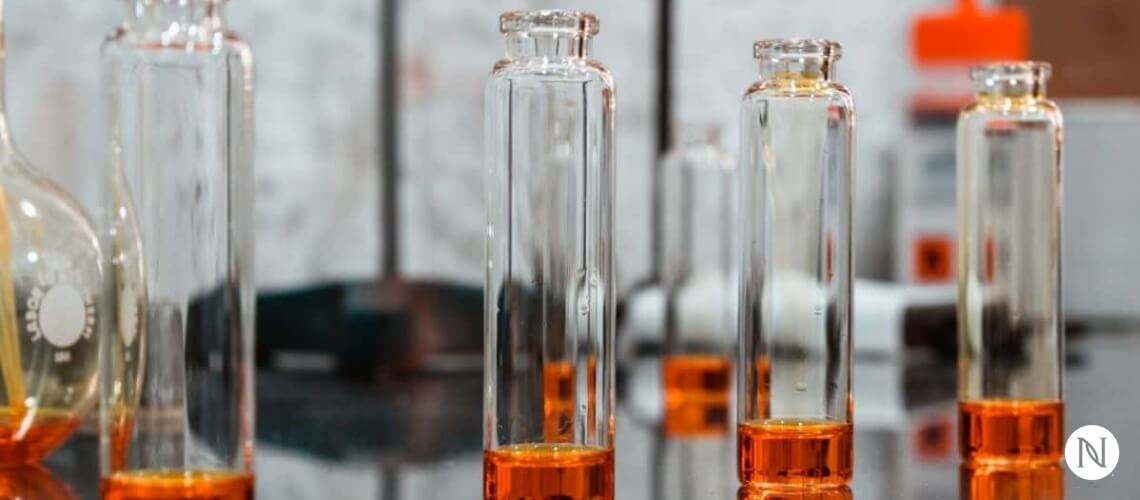Eight Toxic Skincare Ingredients to Avoid

The clean beauty industry is having a major moment. Synonymous with non-toxic formulas, clean beauty refers to cosmetics and skincare products that are kind to people and the planet. Unfortunately, building a beauty regimen that is free of harmful skincare ingredients can be challenging due to a lack of transparency.
The truth about some of the most popular “clean” skincare brands: their formulas might not be as clean (or safe!) as they claim. The good news? There are some brands out there that are as honest as they are clean. From THE honest beauty and wellness brand, our experts are here to provide the truth about the worst ingredients for skincare products, so you can build a routine that is clean, safe and effective, guaranteed.
To help you make informed decisions about what you put in and on your body, here’s everything you need to know about toxic skincare and cosmetic ingredients to avoid.
The Truth About Bad Skincare Ingredients: They’re Everywhere!
While healthy, glowing skin is top-of-mind, the reality is that many beauty and wellness products are still made with harmful ingredients. With so much misinformation out there, a simple Google search for “ingredients bad for skincare routines,” isn’t going to cut it. When it comes to face wash ingredients to avoid and bad ingredients in moisturizers, we’re the experts on what to steer clear of. Here are the top eight offenders:
Formaldehyde and Formaldehyde Releasers
Used as a preservative for extending the shelf life of all kinds of beauty products, ranging from nail polish to hair straighteners, formaldehyde is a carcinogen when inhaled – despite being a naturally-occurring organic compound.
Because formaldehyde is a gas it’s often disguised in formulas as a “formaldehyde releaser,” including DMDM hydantoin, methylene glycol, quaternium 15 and 3 dioxane.
Parabens
Another common preservative in cosmetics, parabens have been linked to disrupting hormones, harming reproductive organs, impacting birth outcomes and causing breast cancer. Although the FDA is still reviewing the evidence, it’s better to be safe than sorry.
On ingredient lists, parabens may also go by several different names, such as butylparaben, ethylparaben, propylparaben and methylparaben.
Phthalates
While the evidence against phthalates and their impact on human health is still growing, what we currently know about these omnipresent chemicals is alarming, to say the least. Exposure to phthalates is linked to asthma, ADHD, obesity, type II diabetes, low IQ, autism spectrum disorder and even early death.
In fact, the evidence against phthalates is so bad that the European Union banned them from cosmetics. Meanwhile, despite being one of the most obvious cosmetic ingredients to avoid, its use remains prevalent in the U.S.
Synthetic Fragrances
While the word “fragrance” may have a nice connotation, synthetic fragrances contain many chemicals that are anything but. In addition to containing known toxic skincare ingredients like phthalates, benzene derivatives, aldehydes and other cancer-causing agents, synthetic fragrances also can cause rashes, irritation and other allergic reactions.
Siloxanes
Commonly known as silicone, these silicone-based compounds used for softening, smoothing, and moistening are found in hair products, moisturizers and many skin treatments.
Also known as cyclotetrasiloxane (D4) and cyclopentasiloxane (D5), siloxanes are deemed toxic because they interfere with human hormone function and have the potential to harm the reproductive, immune and nervous systems.
Triclosan
Used for its antibacterial properties (despite being no more effective than soap and water), this chemical ingredient is thought to create dangerous drug-resistant bacteria, as well as cause long-term health issues, including causing allergies and food sensitivities.
Like many of the worst ingredients for skincare on this list, triclosan is also believed to interfere with hormone function, particularly for women.
PEGs (Polyethylene Glycols)
Petroleum-based compounds widely used in cosmetics as thickeners, solvents, softeners and moisturizers, PEGs contain ethylene oxide and 1,4-dioxane, which have been identified as possible human carcinogens. They can also remain in the environment well after they’ve been rinsed away.
In addition to the carcinogenic contaminants they contain, PEG compounds can also lead to skin irritation.
Aluminum
Used for pigmentation and as a thickening agent in many cosmetics and personal care products, aluminum may pose a significant risk to human health. While the research is inconclusive to date, early studies have linked aluminum compounds in cosmetics to breast cancer and neurological risk.
The Beauty of Neora’s Clean and Honest Plant-Based Skincare
Though this list of harmful skincare ingredients may be disheartening, there’s a bright (and beautiful) light at the end of the tunnel. As more people realize that you don’t have to sacrifice results for honest skincare and cosmetic products, the clean beauty movement is finally getting the credit it deserves.
Rather than relying on ingredients that do more harm than good, safe and effective performance-based skincare and beauty products like plant-based retinol – widely hailed as the industry’s “next big thing” – offers a best-of-both-worlds solution.
Not only do clean products benefit your health, but supporting brands like Neora that are committed to honest beauty helps to make the planet a kinder and safer place for all. The first step? Stepping away from toxic ingredients and reaching for clean products, instead! Discover the power of plants in our line of vegan skincare products.
Thankful for clean products that work!!!
So grateful to have options for clean products that deliver results! Thank you for being conscious of protecting our environment with the most incredible Reef safe sun protection and recyclable packaging.